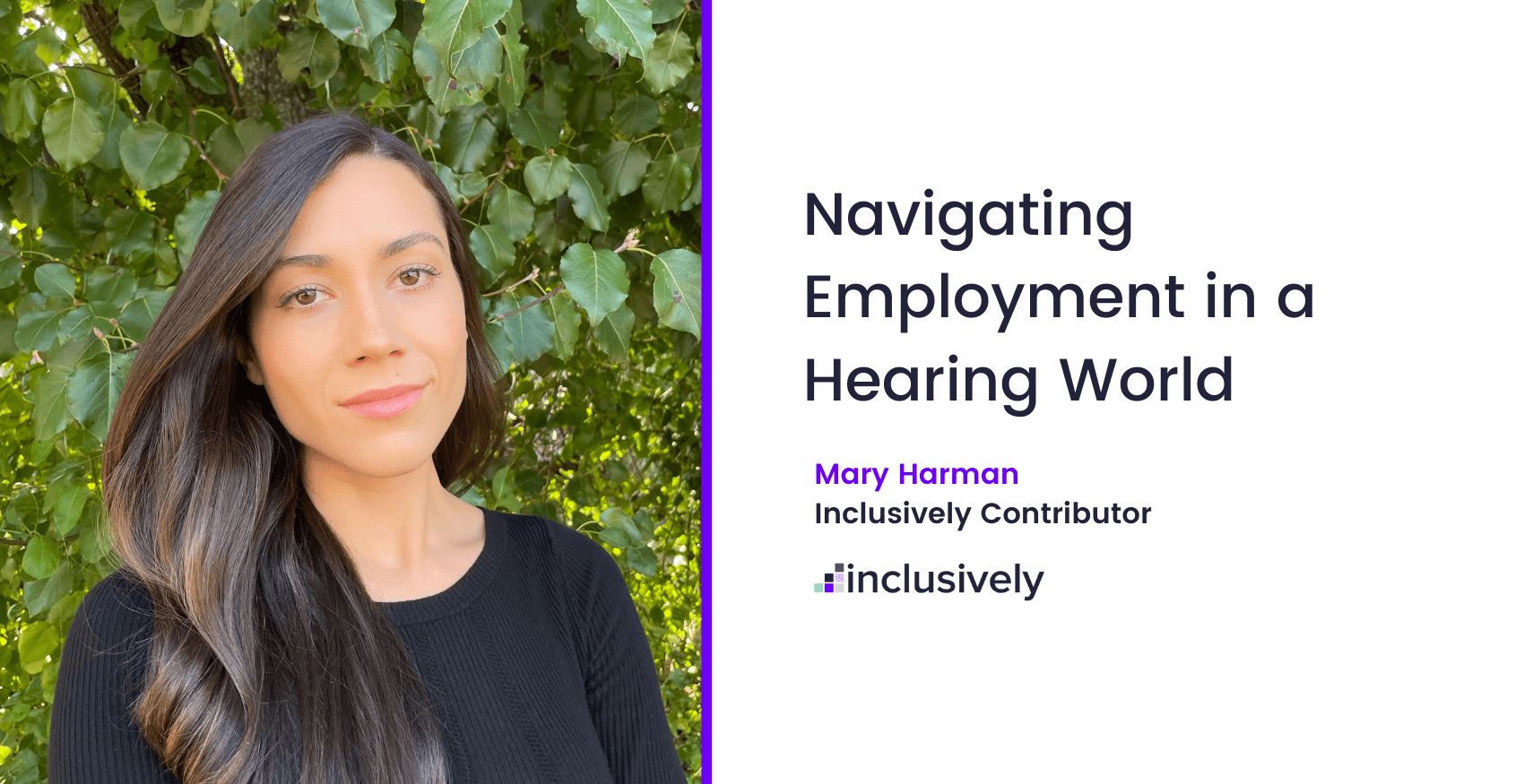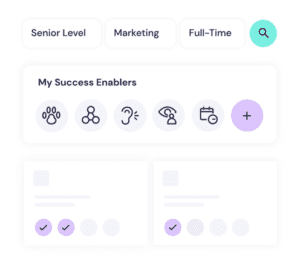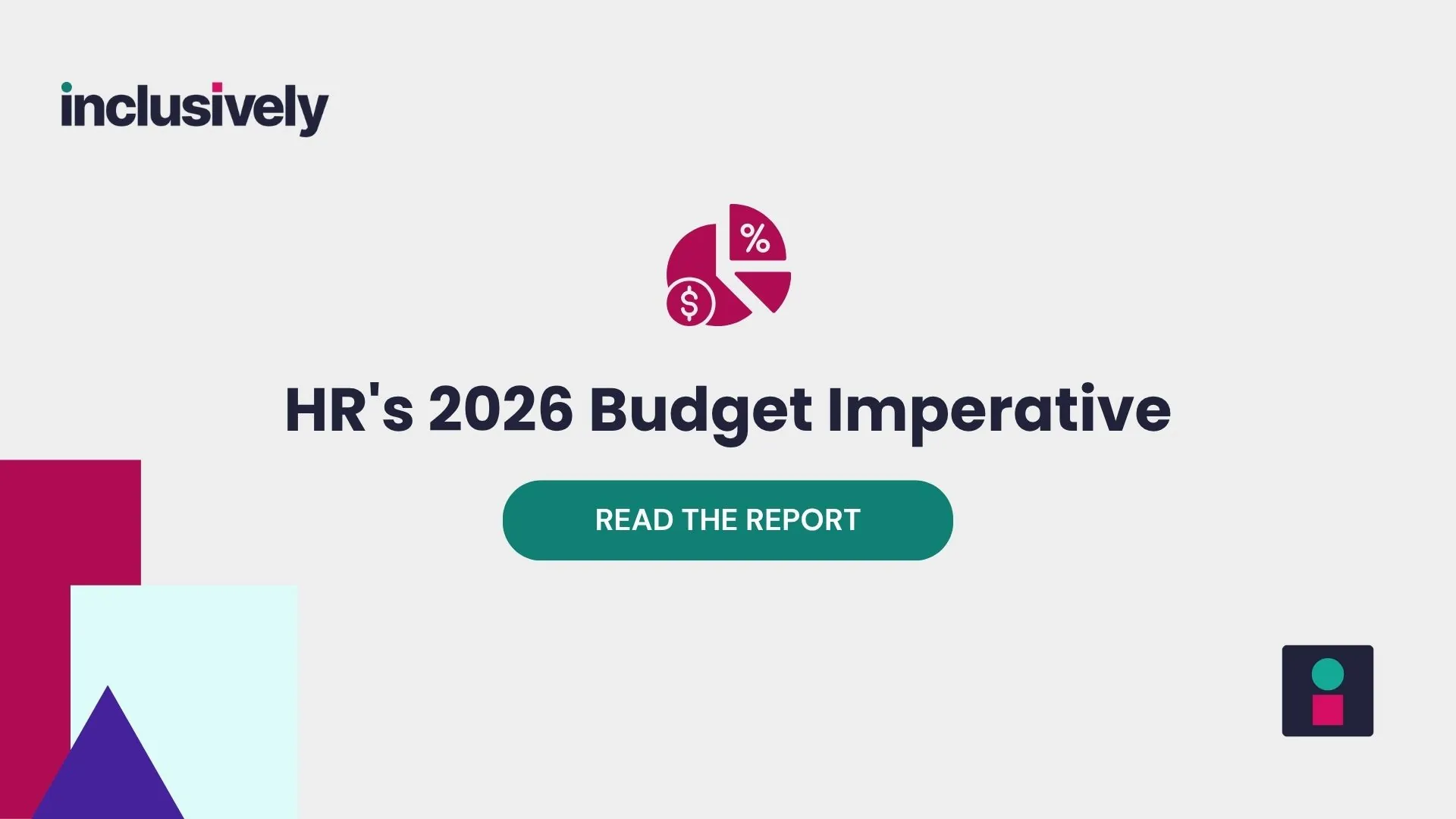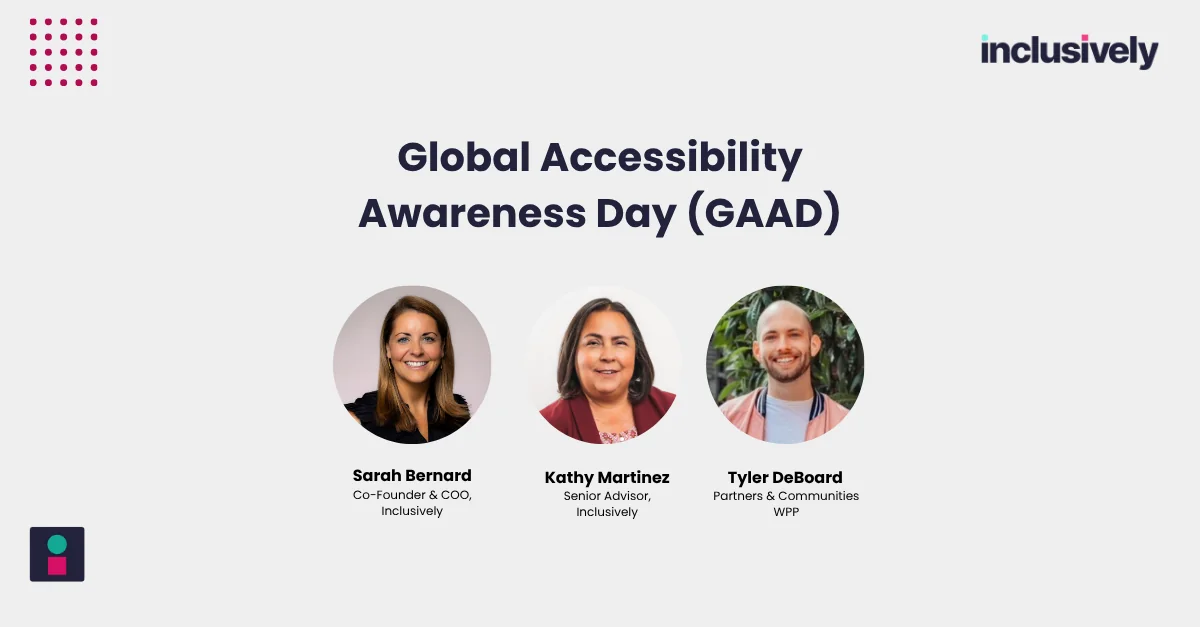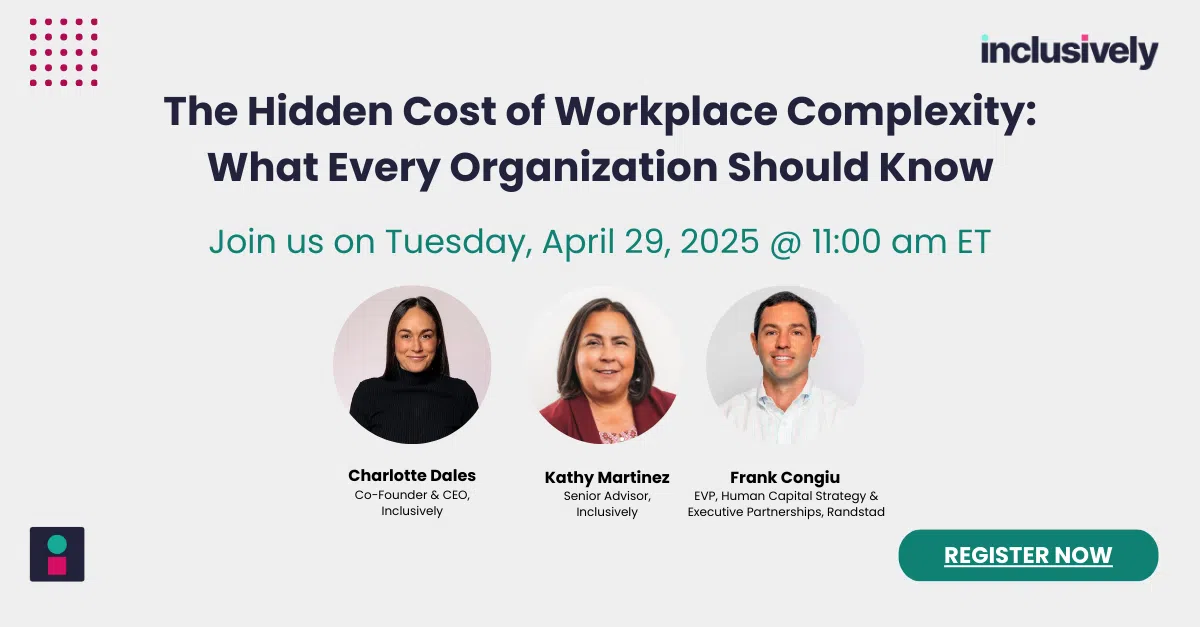Mary shares her insight on disability employment and offers tips to work towards inclusion
“She’s talented, smart, and ambitious, but she’s…deaf. How will this work?”
As a professional who works in a predominantly hearing space, I cannot tell you how many times I’ve encountered versions of that line. Unfortunately, I’m not the only one. People who are deaf often find themselves walking the fine line of self-advocacy and pushing back against prejudice in the face of an employment opportunity gone awry.
Disability Employment at a Glance
Individuals with disabilities are uniquely talented and have much to offer the workforce. Despite how the Americans with Disabilities Act (ADA) is 31 years old, people with disabilities continue to be excluded from the job force. Approximately 1 in 4 people in the U.S. have some type of disability and make up a vast, untapped labor market. The benefits of hiring people with disabilities are well-documented. People with disabilities offer creative ways at solving problems and navigating challenges. They enhance morale and increase work ethic, reducing turnover in the process. Overall, it’s good for business; businesses that recruit and hire people with disabilities outperform businesses that do not. And for employers concerned about costs associated with accommodations, there are federal and state tax incentives available.
Although great strides have been made in efforts advocating equal employment for individuals with disabilities, much work remains. Most policies are implemented by people who are hearing and/or do not use sign language. As a result, people like me who primarily rely on sign language to communicate with others often face additional barriers when pursuing employment. We have to work harder to prove that we have just as much, if not more, to bring to the table than our non-disabled counterparts.
Most times, the differences in how we communicate contribute to this. More often than not, employees who sign have non-signing supervisors and co-workers. Job candidates who sign are typically interviewed by people who are hearing and do not know sign language. Job vacancies are usually posted by hearing employers and the recruiters who work to fill them are predominantly hearing. And while most folks mean well and “don’t know any better,” preconceptions and biases regarding our abilities are harmful.
What the Numbers Reveal
Employment statistics paint a telling picture. For starters, there is a significant employment gap between people who are deaf, deafblind, and hard of hearing (DDBHH) and people who are hearing. Only 53% of deaf people aged 25-64 were employed in 2017, compared to 75.8% of individuals who are not deaf (National Deaf Center, 2019). Additionally, despite advancements in policies, employment rates for persons with disabilities did not increase between 2008 and 2017.
Why is this? There’s no single answer. People who are DDBHH face barriers across the board. Employers often don’t know their obligations under the law, particularly in the area of communication access. Many covered entities lack communication access plans and policies. Long-held stereotypical beliefs that disconsider the abilities of DDBHH people persist. Accessible self-advocacy resources for individuals who are DDBHH are few and far between, and the list goes on.
Implications of Language Barriers and Intersectionality
It is crucial to remember that written information will not work for everyone who is DDBHH. Intersectionality must be kept in mind. There are DDBHH individuals who are limited English proficient (LEP). Some were raised in non-English speaking households. Some continue to experience the adverse implications of language deprivation. People of color with disabilities face additional layers of oppression. For such folks, barriers are even more prevalent and difficult to overcome.
The experience of requesting an accommodation is often a mixed bag. The initial pushback from prospective employers when it comes to providing a qualified ASL interpreter is all too familiar to DHHDB people who use ASL. This ranges from being ghosted after requesting an interpreter to being told, “This isn’t something we provide.” Being assigned an unqualified ASL interpreter isn’t uncommon and employers often misuse Video Relay Services to avoid paying for qualified interpreters. For this reason, the best practice is to engage the person with a disability and defer to them when it comes to determining what provides equal access.
When it comes down to brass tacks, including DDBHH people in the workforce is not a herculean task. Here are tips for employers:
Employer Tip #1: Know What’s Required
The ADA requires that employers communicate effectively with people who have communication disabilities, especially in important communications, including: Interviews, presentations, discussions about training, work procedures, policies, assignments, and disciplinary actions. The goal is to ensure that communication with individuals who are DHHDB is as clear and understandable as communication with people without disabilities.
Consider hiring expert consultants, ideally ones who are DDBHH themselves and possess invaluable lived experience. Receiving training, developing communication access policies and procedures, and doing accessibility audits to ensure communications are accessible will go a long way for any entity.
Employer Tip #2: Use the Interactive Process
The ADA requires covered employers to provide effective, reasonable accommodations for employees with disabilities. In order to determine such accommodations, the Equal Employment Opportunity Commission recommends that employers use an “interactive process,” which simply means that employers and employees with disabilities who request accommodations work together to identify what is effective.
Never underestimate the power of a conversation. When I was hired as a Legislative Aide to a State Senator, one of the first things that took place was a meeting to discuss the essential functions of the job and identify accommodations. I was asked, “What do you need? What do we need?”
Phone calls? A VideoPhone was installed. Intra-office communications? Everyone, including the Senator, downloaded Slack and Cardzilla. A mirror was set up next to my computer because I always had my back to foot traffic and would otherwise have no idea what was happening behind me. And to top it off, there were zero issues with scheduling and working with my qualified and preferred sign language interpreters.
Determining effective approaches to accommodating DDBHH employees should always be considered on a case-by-case basis. Identifying what is effective for the DDBHH individual requires engaging them and finding out, underscoring the significance of the interactive process.
Employer Tip #3: Simplify the Accommodations Process
The process of requesting and receiving an accommodation can be burdensome, even for those with the wherewithal to self-advocate. Be as clear as possible about requesting accommodations and always include information in your job postings about how accommodations can be requested. Even if this is part of your current process, consider evaluating it on a regular basis to ensure it is accessible to the full spectrum of persons with disabilities. Bear in mind that when it comes to requests, the person with a disability is most likely the expert in determining what provides equal access.
Doing this can go a long way in recruiting top talent. This sends a message that you are not only willing, but also prepared to provide candidates an equal opportunity to participate in the hiring process. When I see a job posting that includes language about how to request accommodations, I feel that the company is more likely to be inclusive and have a plan in place. To me, this means I probably will not have to expend as much emotional labor. Furthermore, when companies have a communication access plan in place, the process is streamlined, positioning all parties to reap maximum benefits.
Now, here are tips for employees and prospective job seekers:
Employee Tip #1: Know Your Rights
Knowing your rights can go a long way in navigating the job sector as a person with a disability. As someone who is DDBHH, understanding your right to effective communication and equal access under various laws is crucial in self-advocacy. Know what constitutes a qualified sign language interpreter, and think through approaches and strategies that work best for you.
Employee Tip #2: Tap Into Available Resources
If you find yourself needing assistance, there are various resources available. Consider contacting your local Vocational Rehabilitation office or State Agency for the Deaf and Hard of Hearing. There are Protection and Advocacy Systems and Client Assistance Programs in every state and U.S. territory; go here to find one near you. The Job Accommodation Network has a plethora of resources available as well. Finally, the National Association of the Deaf has resources regarding employment issues, which can be found here.
Take advantage of an inclusive professional networking platform like Inclusively, which aims to match candidates with disabilities with inclusive employers and provides various resources, including digital training services and accessibility tools!
Employee Tip #3: Connect with a Community of Supporters
Navigating the employment space as a person with a disability can be exhausting and frustrating at times. Having a community of supporters can provide emotional support and insight when you need it. You can form a circle by connecting with people on social media, virtual video conferencing platforms, and so forth. Asking someone you trust or admire to be your mentor can also be a helpful strategy. If possible, get involved in local causes; this can present excellent networking opportunities.
Looking Ahead
The process of hiring people with disabilities and providing reasonable accommodations may seem daunting at first, but rest assured, it is not as complicated as it seems. By taking the right steps, you can cultivate a diverse and representative company that reflects the national demographic.
Everybody stands to benefit from a more inclusive world. I encourage employers to maintain an open mind, embrace curiosity, and believe in the power of a conversation. I encourage disabled job seekers to grow a community of supporters, learn your rights, and embrace your unique set of skills and perspectives.
The spectrum of humanity is incredibly vast; it would be a disservice to consider disability a phenomenon that is an outlier. People with disabilities are everywhere and are ingrained in the human experience. To exclude us is to exclude a vast, talented labor market capable of taking your company to the next level.
If you have a disability, I would love to know your experiences navigating at work. I’ve shared this topic in Inclusively’s new Community Portal, created for job seekers, employers, and partners to discuss disability employment topics, share experiences–and grow personally and professionally.
Overview of a candidate’s job search indicators, including Senior Level, Marketing, Full-Time, My Success Enablers with a row of icons.
How Inclusively Works
Inclusively’s accessible employment platform and job matching technology goes beyond traditional search criteria and allows candidates to connect with opportunities that match their experience, skills, and workplace accommodations – called Success Enablers. Examples include screen readers, noise-canceling headphones, an emotional support animal, accessible parking and entrances, braille signage, and dozens more.
